Room Requirements
Learn about the room requirements for cryotherapy chambers that use liquid nitrogen as a coolant, and learn more about CRYONiQ® procedures and safety standards.
Learn about the room requirements for cryotherapy chambers that use liquid nitrogen as a coolant, and learn more about CRYONiQ® procedures and safety standards.
Client & Operator Safety are key components for a successful recovery & cryotherapy business.
That's why we have set out to assist our customers with the implementation of proven safety standards & regulations that create a safe work environment.
The Ceiling Height -
To accommodate the CRYO XC™, the ceiling must be at least 7 ft 7 in / 230 cm high.
This can vary for different brands. Some brands require more than 7 ft 7 in / 230 cm.
Orientation of the unit -
This can be an important factor for rooms with limited space -
The CRYO XC™ offers different options with Left, Right and Custom Orientation.
Room Layout & Size
All Cryo Rooms usually require additional equipment and accessories, our drawings demonstrate a basic room layout:
If you'd like to learn more about the physical requirements of the CRYO XC™ go to CRYO XC™ Physical Specs.
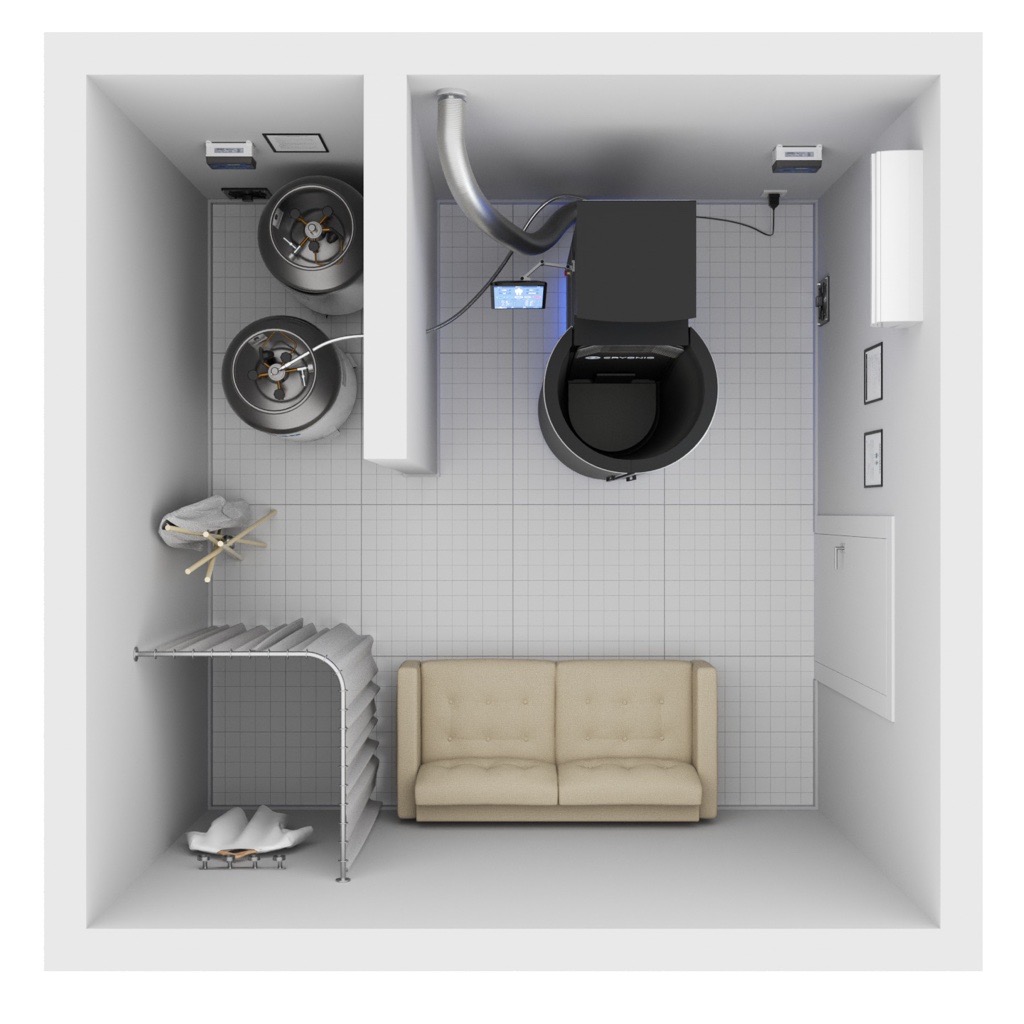
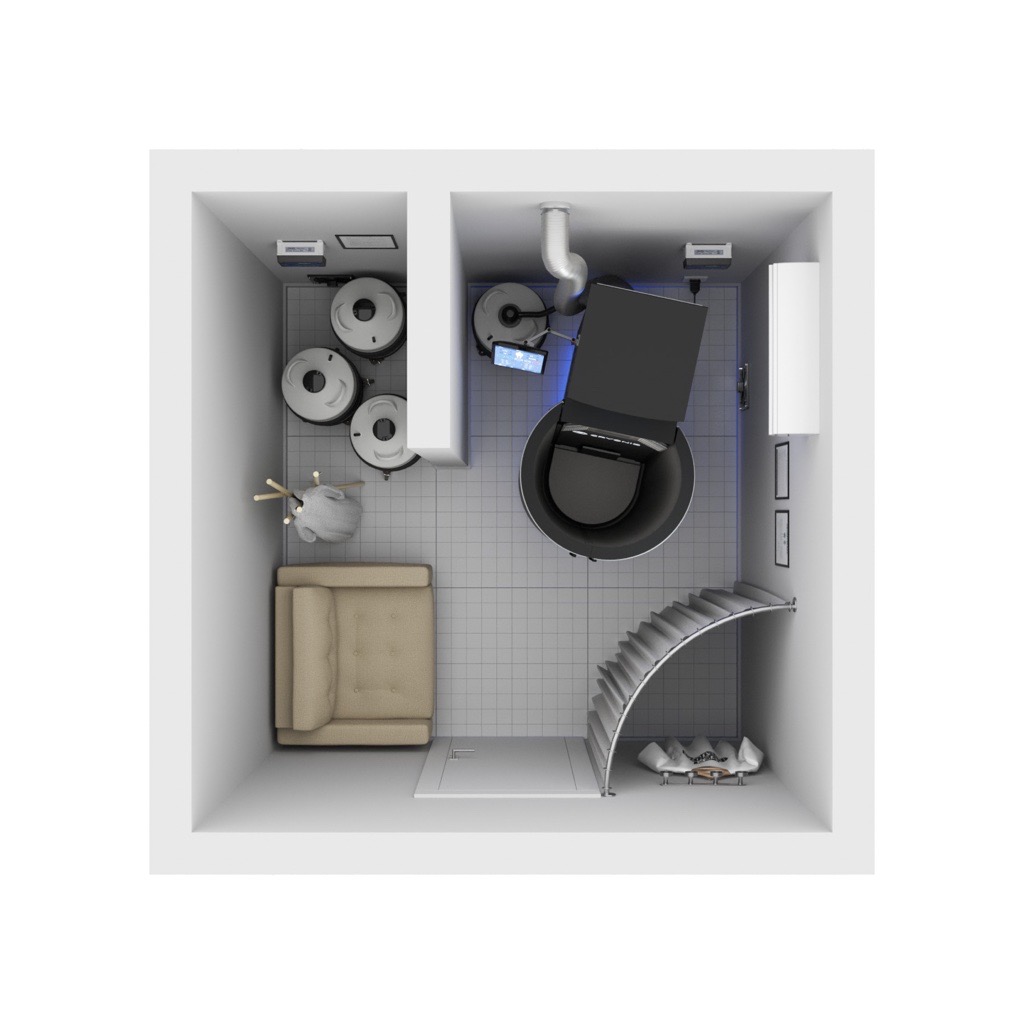
Liquid Nitrogen Supplies
All facilities will need to be serviced by a liquid nitrogen supplier on a regular basis.
If there isn't a feasible option for liquid nitrogen found locally, then it is a risk purchasing a cryotherapy machine that requires liquid nitrogen to run.
That is why our first step is to search for the best option for LN2 deliveries in the area. Once we have found the right supplier, we are happy to move ahead.
Risk Assessments
New projects may require an on-site risk-assessment. This is especially recommended for smaller confined facilities.
Most LN2 suppliers offer risk assessments before they approve deliveries to a facility.
In some cases, we may offer an online risk assessment. This requires filling out a questionnaire followed up with a video conference.
Contact Us if you’d like to arrange an on-site or online risk assessment.
If you'd like to learn more about LN2 Suppliers go to Liquid Nitrogen Suppliers.
Liquid nitrogen is turned into a gas which can gradually build up in the room if it goes unchecked. Forced ventilation of the room is therefore a necessity. The cryotherapy chamber must have the ability to evacuate any excess nitrogen from the room.
We advise all future cryotherapy facilities to prepare an opening of a diameter of at least 5 in / 15 cm on an external wall that will be connected to the cryotherapy unit.
This allows for excess nitrogen to be expelled outside of the client cabin and room.
On several occasions, we have previously connected the exahust to the existing ventilation system, which can save some work.
Many locations will need to install an air inflow system in order to ensure that fresh air is continuously forced into the room. 6 exchanges of air per hour are sufficient to comply with safety standards.
An Oxygen sensor must be installed in the room to monitor oxygen saturation. The CRYO XC™ Plus has an oxygen sensor built-in that tracks the surrounding environment and warns the operator about oxygen saturation in the room but is not be used as a replacement for certified oxygen monitoring systems.
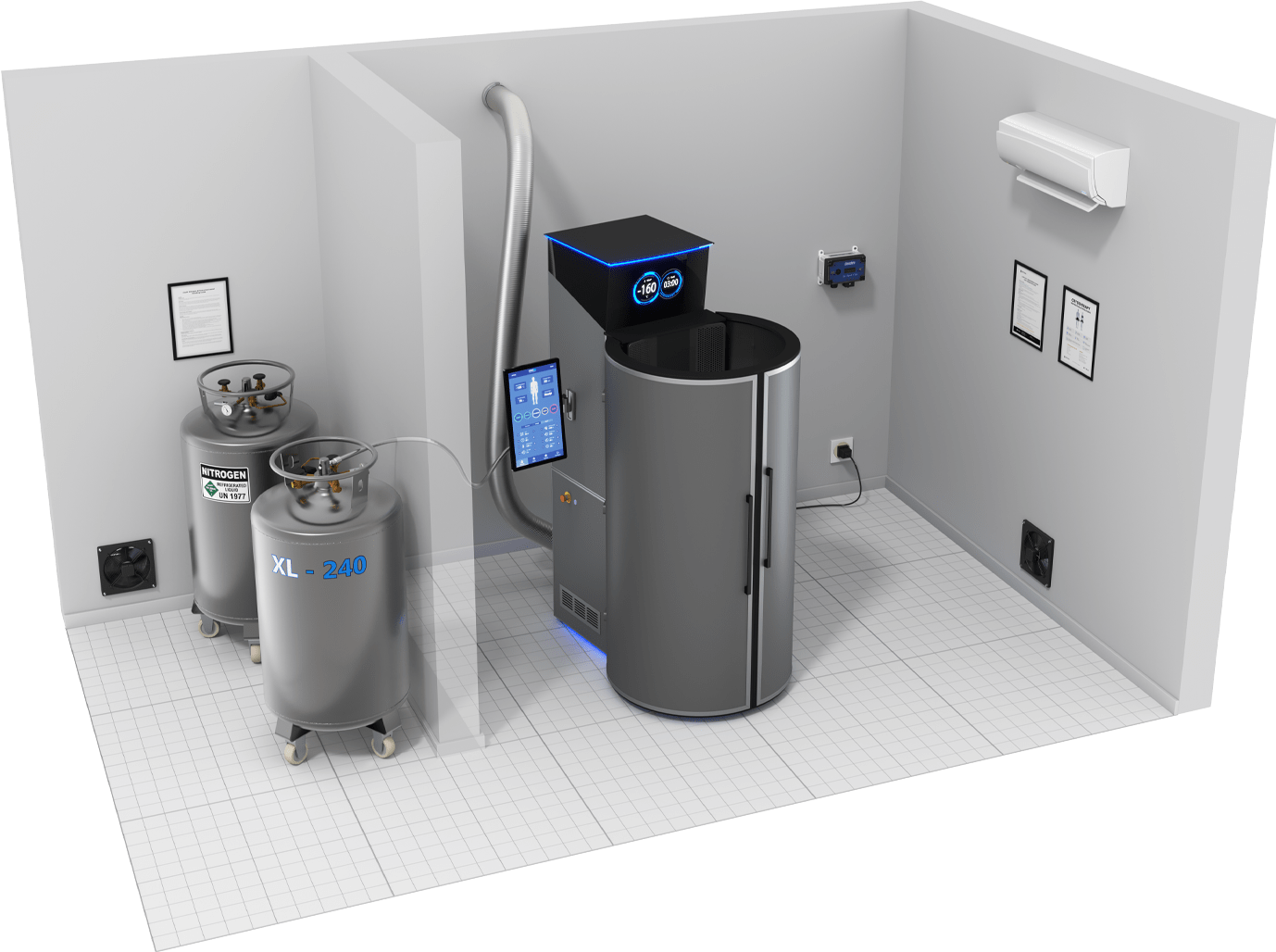
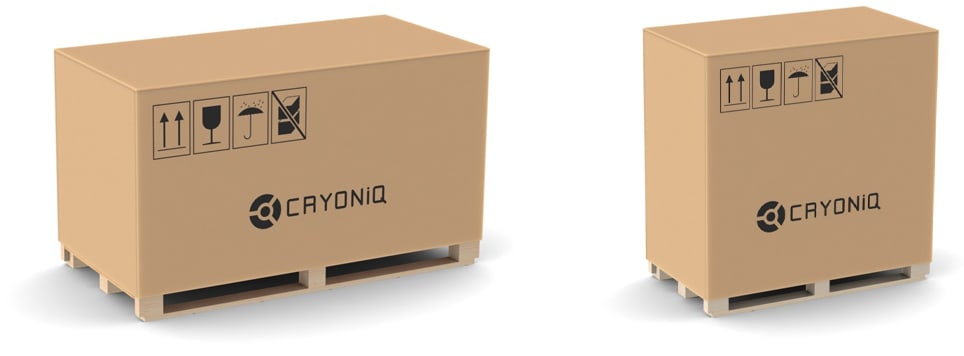
Delivery of the Equipment
Sometimes delivery can take place days before the install and may require dedicating storage space for the delivered crates.
Delivery may also require a forklift or in most cases a group of people unloading the crates carrying the equipment off of the delivery truck.
Once set down, the crates can be taken apart and the equipment may then be disassembled and transported into the facilities.
Door Clearance
The CRYO XC™ requires all doorways to be at least 2 ft 3 in / 65 cm wide to be able to pass.
Liquid Nitrogen Delivery
Easy cccess from/to the nitrogen vessels from the outside/street or the refilling zone to where the nitrogen tanks are stored.
For more details go to Delivery and Installation of a CRYO XC™ cryotherapy chamber.
During the operation of a nitrogen cryotherapy chamber, lower concentration of oxygen in the air can occurr under certain circumstances.. Oxygen levels in the room must not drop below 19%.
If the oxygen levels drop below this level, there is an increased risk of hypoxia, which in the least serious cases can lead to discomfort in the form of lightheadedness or in more serious cases of exposure can lead to fainting and worse.
Safety guidelines during sessions for operators and clients are a part of the training process and all operators receive a Safety Guideline sheet.
In case you are left with questions please get in touch with our team on [email protected]
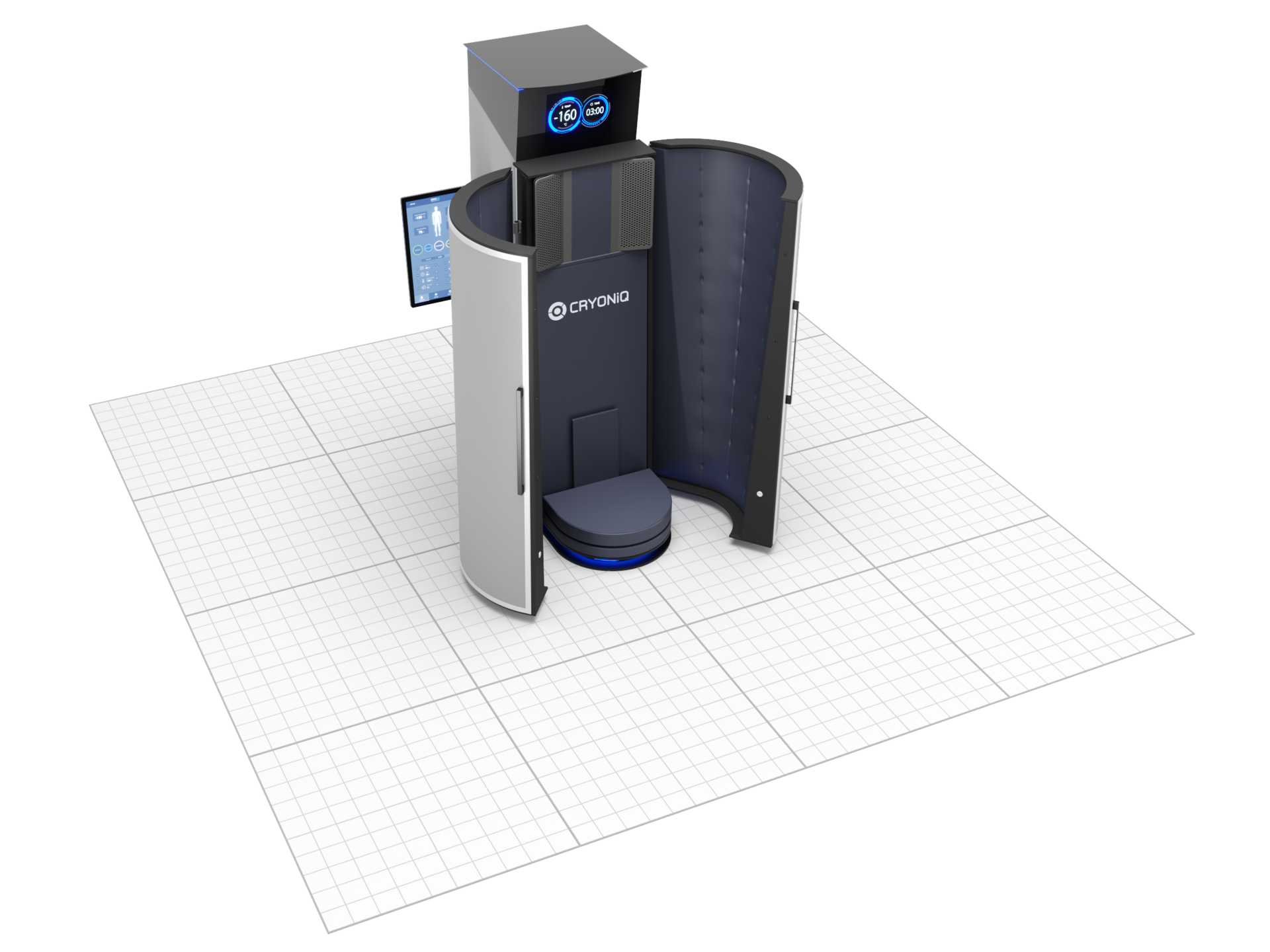
Dedicate some space for a changing room for the comfort of your clients.
A regular changing room with hooks/racks will be sufficient.
Dedicate enough space to store liquid nitrogen tanks.
Pressurized System
Make sure you can easily move nitrogen tanks when getting a nitrogen delivery by having unobstructed access between the cryotherapy unit and the refill site.
One 240 liter tank can take up to about 2.5 ft x 2.5 ft / 65 cm x 65 cm of space.
Nitrogen tanks build up moisture on the outer coating that can drip on the floor.
Non-Pressurized System
Make sure you can easily move nitrogen tanks when getting a nitrogen delivery by having unobstructed access between the cryotherapy unit and the refill site.
One 50 liter dewar can take up to about 1 ft 8 in x 1 ft 8 in / 50 cm x 50 cm of space.
Buy a Cabinet/Install shelves for Accessories
A starter pack of gloves, safety collar and safety footwear comes standard with the cryo chamber.
As part of safety protocols we recommend that all customers install the following ventilation fans/pipes.
Exhaust fans
The exhaust fan continously pulls air from the room while the cryotherapy equipment is in operation.
Fresh Air-flow
Air Conditioning continuously brings in fresh air. A safe setup is one that can ensure 6 air changes within the room in one hour.
Evacuation pipe (5 Inch Diameter) -
The evacuation pipe is connected to the Cryo chamber and leads outside where it lets out nitrogen vapors after each session.
All facilities may have different requirements for safety, find out if your future Cryo Room is suitable now or whether it needs upgrades.
All features above are recommendations and may not be required in your facilities.
Find out how cryotherapy chambers can help your business grow, learn how a cryo chamber at home can be an everyday boost for users or research the steps on how to pick a cryo chamber.
Find out how cryotherapy chambers can help your business grow, learn how a cryo chamber at home can be an everyday boost for users or research the steps on how to pick a cryo chamber.